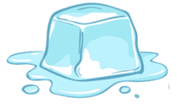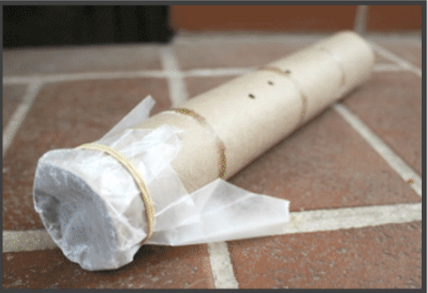Your child's first introduction to science and scientific process has already begun. As with much early learning, families are the first teachers!
Children are experiencing the world through their FIVE SENSES: seeing, hearing, tasting, smelling and touching, and they are "wired" to want to experience more. Take advantage of this natural curiosity by offering early science experiments that make the best use of their five senses.
Here are five simple early science experiences that will require your child to use their senses to "form ideas" from this play. Forming ideas means to:
Children are experiencing the world through their FIVE SENSES: seeing, hearing, tasting, smelling and touching, and they are "wired" to want to experience more. Take advantage of this natural curiosity by offering early science experiments that make the best use of their five senses.
Here are five simple early science experiences that will require your child to use their senses to "form ideas" from this play. Forming ideas means to:
As you go through these experiences, be sure to talk to your child about what they are doing. Encourage them to describe their action, explain why they are doing it, and what they are seeing, hearing, tasting, smelling or feeling. Help them record their results through drawing or dictating to you.
As you and your child explore the world through science, offer various materials to investigate. Some ideas for what to include: bowls, cups, spoons, straws, blocks, rocks, clay, water, paint, chalk, rice, flour, salt, beans, dirt and soil, mirrors, fabric, paper, string, yarn, and pencils. The supply of materials and the combinations of experiences may be a formal experiment, or simply open play and experimentation - ending in a happy little mess! It's all SCIENCE!
So go ahead - make a mess. And create a scientist!
As you and your child explore the world through science, offer various materials to investigate. Some ideas for what to include: bowls, cups, spoons, straws, blocks, rocks, clay, water, paint, chalk, rice, flour, salt, beans, dirt and soil, mirrors, fabric, paper, string, yarn, and pencils. The supply of materials and the combinations of experiences may be a formal experiment, or simply open play and experimentation - ending in a happy little mess! It's all SCIENCE!
So go ahead - make a mess. And create a scientist!
Melting Ice CubesDirections: Put one or two frozen ice cubes in each compartment of the muffin tin. Also put a different "ingredient" in each space but one. Observe: Which item melted the ice the fastest? Which melted it the slowest? Did you try putting an ice cube out in the sun? |
Exploding Bag Directions:
Check your bag for leaks by filling it halfway with water and turning it upside down. If it leaks, use a different bag. Tear a paper towel into a square that measures 5 inches by 5 inches. Put 1 1/2 tablespoons of baking soda onto the center of the square as shown below. Pour 1/2 cup of vinegar and 1/4 cup of warm water into the bag. Zip the bag halfway and carefully slip the baking soda packet inside. Put the bag on the ground and stand back! |
Make Your Own Kazoo
|
Materials:
Cardboard toilet paper or paper towel roll Wax paper Rubber band Sharpened pencil Directions:
Cover one end of the cardboard roll with wax paper and secure it with a rubber band. Poke a hole in the carboard roll using the sharpened pencil or similar. Hold the open end of the cardboard roll to your mouth. Hum or say "do" over and over to make a kazoo sound (this part might take practice). Optional: Paint and decorate your kazoo! |








